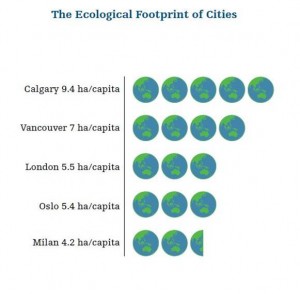The human population is growing, exponentially. It is estimated by 2025, our species will number over 9 billion, a 22% increase in our population! That’s alarming – not because humans by nature are a threat to the environment, but because of our species’ current consumption patterns.
Skeptics don’t have to look far; according to the City of Vancouver we have a 4-Plant ecological footprint. What this means is that if every human in the world, consumed (and disposed the resulting waste) like Vancouverites do, we would need no less than 4 planet earths just to provide for the resulting demand. What scares me is that we are considered one of the better cities in North America by this standard.
Relax, I’m not about to go on a rant condemning our consumer economy or antagonizing corporations. That is not what this blog is about. My interest in marketing is not its role in creating this problem, but its unequivocal capability to amend it. My motto: marketing got us into this mess, so why not use marketing to get us out.
Now by this I don’t mean just spreading awareness. Everyone already knows that climate change is a problem. Basically when it comes to influencing consumer behavior through attitudes, environmentalists have covered the cognitive (think) component by providing information on why our environment is in danger, and the affective (feel) component by acknowledging what we may lose. The trouble now is getting people to act on the behavioral component (do), and I don’t think this can be achieved simply by further educating people on environmentally friendly behavior.
More emphasis has to be made on using social factors to curve behavior by creating green social norms. Majority of green marketing right now focuses on green as being the right thing to do, which it is, but this only influences a select group of people who are motivated by their needs for self-actualization. Instead green should be promoted as the cool thing to do! The sexy thing to do! The socially expected thing to do! This will influence a much larger segment of society, the part that is trying to fulfill their love and belonging and esteem needs, as described by Maslow’s hierarchy, and for these reasons the segment of society that consumes the most.
This misguided bunch should be our priority. If we can get them acting right, the entire system will adjust to please these dominant consumers’ shift in demand. In the coming weeks I hope to explore (with your help) how we can start reversing social perceptions and start making things like thrift and cyclic consumers something that is admired and looked up to again. It’s time we revolve our consumption.